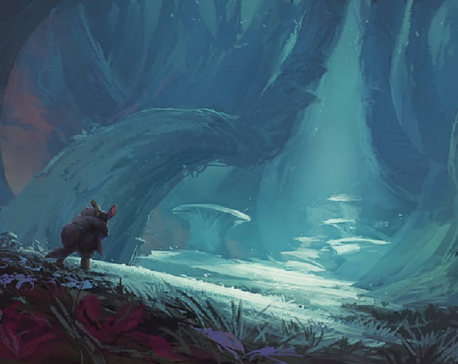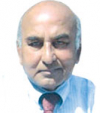
OR

What has followed since the abolition of monarchy in 2006 and Maoist’s winning of the election in 2008 is the slow erosion of state power and complete disarray of governance
It was early in the afternoon of April 9 30 years ago, when the news reached Washington that King Birendra had agreed to replace Panchayat with multi-party democracy, the long-held demand of democracy activists in the country. Prior to the King’s surrender of absolute authority, tens of thousands of demonstrators had converged in Durbar Marg in front of the royal palace. Nearby, in front of the Annapurna Hotel, some demonstrators climbed on the statue of King Mahendra, to hang a shoe garland. The military personnel standing nearby had earlier warned that they would shoot anyone engaging in such mischief and, surely, they shot a number of demonstrators while climbing the statue. In the evolving mêlée, the military fired on the crowd randomly, killing some 150
demonstrators.
Kathmandu turned quiet over the night and the next couple of days but, reportedly, some serious negotiations took place between the King and the representatives of multi-party leaders. Finally, Congress leader Krishna Prasad Bhattarai came on TV late in the evening of April 9 to announce agreement that the King had agreed to re-instate democracy and dismantle Panchayat.
Reportedly, the King had opted to appoint Senior Congress leader Ganesh Man Singh as Prime Minister but Singh requested the King to choose KP Bhattarai instead, apparently because of his advanced age. And so KP Bhattarai was appointed the first Prime Minister of new democratic administration until a new government is elected after the general election within a year.
The change was widely celebrated across the country and across ethnic groups who had come to show deep dissatisfaction with the one-party rule headed by the King. Once the King withdrew his support, all of Panchayat's infrastructure built over the past 30 years fell apart and, reportedly, not a single demonstration occurred in opposition to the change. Politics in disarray
During the early years of the return to democracy, in 1990, there was nothing that portended a troubled future, for democracy as well as for the nation itself. The transition of power took place smoothly and old administration got cleaned up as comprehensively as was possible, given the shortage of qualified personnel and, more importantly, of democracy loyalists
However, democracy faced a big hurdle making a good start—a breakdown of political consensus which, in large part, ensued from the power play in the Nepali Congress which, for decades, had been perceived as the leader of and a trusted guardian of democratic values.
Within a year of the start of the democratic process, Congress faced an irreconcilable leadership feud that broke the party into warring factions. This resulted in its disastrous showing in the first general election held in 1991, a year after the start of the democratic governance. Congress won just 112 seats of the total 205 parliamentary seats contested, which was the barest of electoral margin to form a majority government. After the government formation, further split in the party occurred with its eldest and charismatic leader Ganeshman Sigh leaving the party. The new Prime Minister GP Koirala found it difficult to keep his post given the heavy pressure on him to resign in favor of another eligible at the party. GP Koirala didn’t opt for this alternative and, instead, he chose to dismantle parliament and called for a new election that took place in 1994.
Koirala misperceived his party getting re-elected with a majority vote in parliament. In the face of the erosion of public confidence in Congress, the Communist party came to dominate the country’s politics. Communist party didn’t get a majority in parliament but won the largest number of seats that allowed it to form the new government. It was a shame for Congress Party to have been defeated by a communist party that had no democratic credential or commitment.
Congress could have cooperated with the communist-led democratic government to honor the democratic mandate which the communist party had obtained in a democratic election. Instead, Congress leaders joined hands with Panchayat’s old guards to unseat the communist government. Such a bizarre act further eroded its public support and many quit Congress to set up their own parties. This put Congress party in total disarray, further dimming its chances of winning votes and coming back to power.
A weakening of Congress provided fuel to the communist forces, particularly to Maoist rebels who emerged from nowhere and not only did they challenge Congress but also they revolted against monarchy which they were able to force out in just10 years of their campaign. Allure and electoral clout of Congress further eroded during the subsequent elections, pushing it to the sidelines of Nepali politics that worked to undermine democratic ideology, public freedom, and the observance of rule of law.
Lawless State
What has followed since—especially after a de facto abolition of monarchy in 2006 and Maoist’s winning of an election in 2008—is the slow erosion of state power and complete disarray of governance, a situation where there is no observance of legal provisions common in a democratic set-up. There is parliament, Supreme Court, Army and Police, and a functioning administration but none of the wings of the government rules and ordinance are adhered to, for example, in the management of public finances, enforcement of accountability and fair conduct of public justice.
Most rules and regulations put in place to oversee daily administration and enforcement of discipline get ignored and replaced by discretion, personal standing, family relations and, most importantly, access to political party and closeness to politicians. These features of public life have shaped public’s dealings with government since the early history of the country but, in the post-monarchy Nepal, the use of such extra-legal deal-making has come to replace the existing rules of
conduct.
The outcome has been the birth of a rule-less society where all the deals are made under the table—without fear of retribution and punishment. Public corruption has become so pervasive and so much money gets used in buying and selling of official favors, getting government jobs, securing lucrative contracts, and making bids for plum assignments that regular earnings of public officials become just a fraction of their total take from the job.
Of course, the distribution opportunities for such extra earnings aren’t uniform across public services but one can experience such reality in government operation almost everywhere people interact with government officials and political operatives. The other important aspect of government corruption is that most of it get done with impunity. Thousands of cases of public corruption take place in the country that exploit small farmers and petty businesses but much larger instances of corruption exist in government contracts and procurement of supplies.
Regardless of the size of siphoning off government money, it is rare that any such cases are ever brought to court, get convicted, and given jail time It’s incoherent than that such an extensive abuse of power by government officials and political operatives can be taking place under the country’s democratic façade that provides for an elected parliament, Supreme Court, and open political dialogue. The fact is that most rules and regulations that underlay government institutions do not apply in people’s actual dealings with government officials and at public institutions.
However, the fact is that public life is in total disarray and there is little hope that the situation can improve without a total collapse of the prevailing order. There is no surprise then to observe a certain degree of softening in public perception of monarchy that had chosen first to cut it to size and then scuttle it.
You May Like This

Power in the wrong hands
I am in my late sixties. I must say that I lost my age just as millions of other people... Read More...

Worst is yet to come
Until April 20, when the government issued two infamous ordinances to change the existing laws regarding political parties and the... Read More...

Threshold for healthy politics and stable governance
KATHMANDU, Feb 8: Nepal at present is gearing up for three major elections that would change the face of leadership... Read More...

Just In
- World Malaria Day: Foreign returnees more susceptible to the vector-borne disease
- MoEST seeks EC’s help in identifying teachers linked to political parties
- 70 community and national forests affected by fire in Parbat till Wednesday
- NEPSE loses 3.24 points, while daily turnover inclines to Rs 2.36 billion
- Pak Embassy awards scholarships to 180 Nepali students
- President Paudel approves mobilization of army personnel for by-elections security
- Bhajang and Ilam by-elections: 69 polling stations classified as ‘highly sensitive’
- Karnali CM Kandel secures vote of confidence



















Leave A Comment